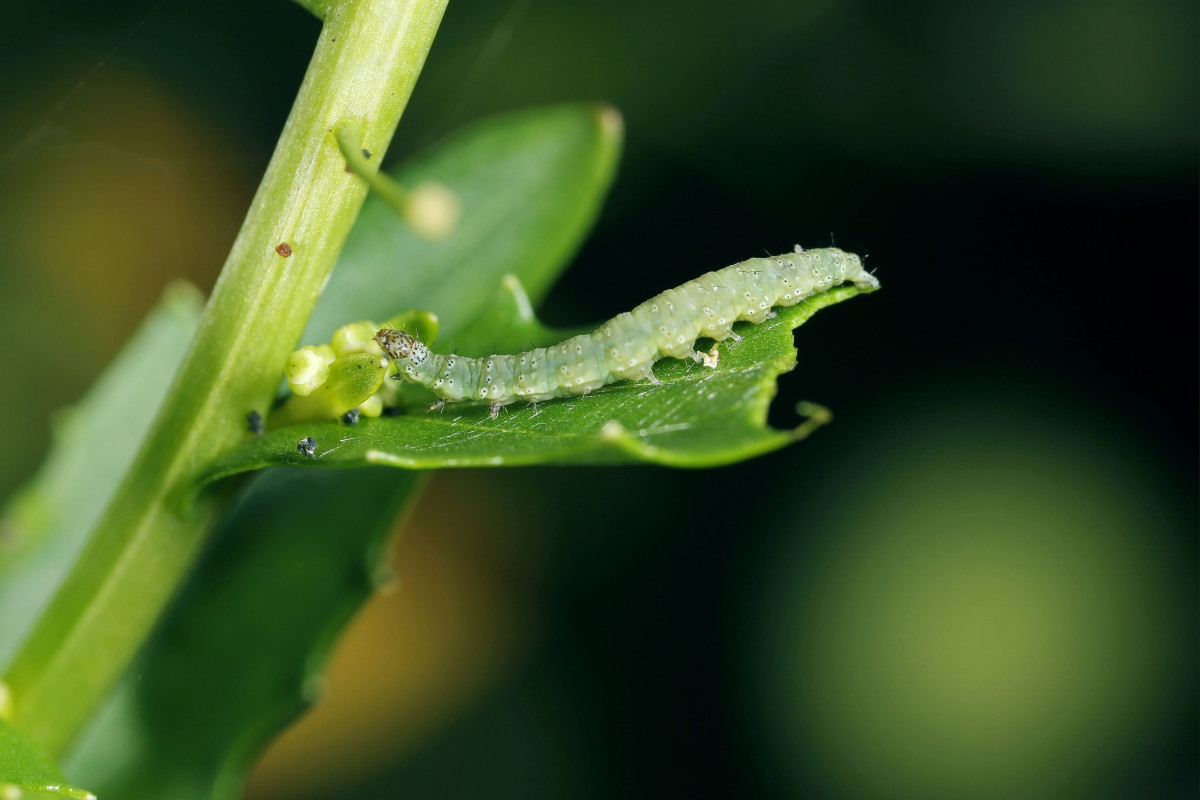The damage caused by garden and vegetable pests is difficult to overestimate. All parts of cultivated plants suffer from numerous insects or arachnids: roots, stems, buds and flowers, fruits, and leaves. Perhaps the most noticeable activity is that of leaf-eating pests. Torn edges of sheet plates and through perforations immediately catch the eye. In advanced cases, the invasion of such pests leads to the death of individual plants or entire plantings. But it’s not all that scary if you know how to quickly identify them and know effective fighting techniques.
Main types of leaf-eating pests
It’s not for nothing that pests are called “leaf-eating” pests. The basis of their diet is leaves, as well as young, rough shoots, less often buds, flowers, or unripe fruits. In most species of this group, the main harmful stage is the caterpillar (larva). Imago (adult individuals) either do not feed at all, or the damage from them is minimal. The risk group includes almost all cultivated plants: from common fruit trees and shrubs to various vegetables and flowers. Among the pests of this group, there are both broad polyphages and monophages.
Although there are hundreds of species of leaf-eating insects found throughout the country, only a few are widespread :
- cabbage, apple, and pear moths;
- cabbage and garden scoop;
- bud, grape, bunch, or fruit leafrollers.
Some of these species easily switch their diet from one crop to another, even belonging to different families. For example, the diet of the fruit leaf roller includes both apple, pear or plum, and quince, apricot or cherry plum. And the cutworm feeds on almost everything – from cauliflower and tomatoes to raspberries, currants and apple trees. Speaking about leaf-eating pests, we can recall the most famous insect from this group – the Colorado potato beetle, which causes damage to various nightshades, primarily potatoes.
The number of leaf-eating insects varies greatly both from year to year and within one season. Unfavorable wintering conditions and some preventive measures greatly reduce the number of pests. On the contrary, the absence of any control measures and warm winters allow populations to recover to critical numbers again. Moreover, the growth of populations of many species can be avalanche-like even within one summer, if there are conditions for multiple laying of eggs.
Perhaps a few dozen caterpillars will not cause significant damage to your plantings, especially to older fruit trees. But even isolated pests are dangerous for young vegetable crops. By actively feeding, they inhibit their growth and delay the period of fruiting. In addition, pests will become the basis for the next generation, which will be much more numerous. And this definitely cannot be allowed.
Fighting methods
Preventive measures include :
- control of weeds that serve as additional food supply for pests or shelters for them;
- collecting fallen leaves and fruits;
- digging up tree trunks and shrubs in the fall, as well as digging up perennial ornamental plants;
- digging up soil after harvesting from vegetable beds, as well as flower beds where annuals grew;
- cleaning tree trunks from peeling bark.
Such measures help to destroy some of the pests that remain in the garden or garden for the winter. But what if the insects appeared in early spring or during the summer? Don’t wait until autumn. In this case, drastic means must be used – effective insecticides.
Sometimes, however, the question arises: what poison to choose to combat certain leaf-eating pests? After all, insects can be of different species and live on different crops.
When combating leaf-eating insects, it’s important to select an insecticide that is effective against the specific pests you’re dealing with and is also suitable for the plants you’re trying to protect. Below are some of the best pesticides that can be used to manage leaf-eating insects. However, always read the label and follow the instructions for safe and effective use.
Organic Insecticides
- Neem Oil: Extracted from the neem tree, this oil disrupts the life cycle of insects at all stages (egg, larvae, and adult). It’s a good choice for organic gardens and is effective against a variety of leaf-eating pests.
- Spinosad: This is a natural substance made by a soil bacterium that can be toxic to insects. It is used to control a wide range of insects including caterpillars, leafminers, and thrips.
Chemical Insecticides
- Pyrethroids: Synthetic chemicals similar to the natural pesticide pyrethrin found in chrysanthemums. They are effective against a variety of insects and are found in many readily available insecticides.
- Carbaryl: A broad-spectrum insecticide commonly known under the trade name Sevin. It can control a variety of leaf-eating insects but must be used with caution, especially around beneficial insects and pollinators.
- Acephate: An organophosphate insecticide that is very effective against caterpillars and other sucking and chewing insects.
Biological Controls
- Bacillus thuringiensis (Bt): This is a microbial insecticide that is specific to certain types of insects, mainly caterpillars. It’s safe for humans, pets, and beneficial insects.
- Predatory Insects: Introducing or encouraging beneficial insects such as ladybugs, lacewings, and parasitic wasps can help naturally keep pest populations in check.
Best Practices
- Always rotate pesticides to prevent pest resistance.
- Combine chemical treatments with cultural practices like removing debris and managing weeds.
- Consider the impact on pollinators and other beneficial insects; avoid spraying when these insects are active.
- It’s essential to correctly identify the pest before selecting a pesticide to ensure the treatment will be effective.
Note: Before using any pesticide, verify that it is legal and appropriate for use in your area, and that it is safe for the specific plants you are treating. If in doubt, consult a local extension service or a professional pest management service.


